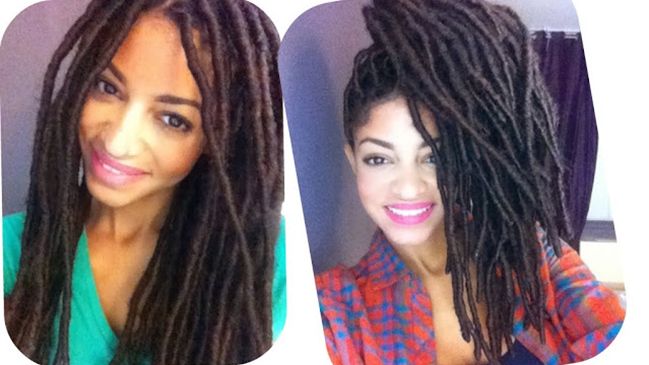It’s protective styling season for many of us, but before you call up your hairstylist, please take the time to read this post in full.
What is protective styling?
The definition of this term varies from person to person and blogger to blogger. But I define protective styling as any style that protects your hair from physical, chemical and environmental disturbances.
- Physical disturbances involve daily styling, combing, and any curl/coil alteration such as twists, braids, “out styles”, up-dos, stretched hairstyles and the like.
- Chemical alteration involves heat and color treatments.
- Environmental disturbances involve elements/pollutants from the air which can bind to the hair strands and cause damage. Environmental disturbances also involve extreme weather conditions such heat and frost.
The cumulative effect of the above can be detrimental to the health of our hair and a hindrance to hair growth.
While some of these disturbances are inevitable, some of them can be avoided or minimized by simply putting the hair away to rest for a while. Protective styling is a great way to avoid physical disturbances and reduce the effects of environmental disturbances. Depending on the style of choice, you can actually retain more length when your hair is in a protective state in comparison to when it’s out.
Who should be doing protective styling?
- Those with fine hair which is prone to breakage even when handled with great care
- Those who tend to do too much with their hair without giving it any break
- Those who live in an extremely cold, hot and/or windy climate. As well as those who live in a polluted environment
- Those with a busy schedule
- Those in the show business
- Newbies who aren’t yet comfortable with changing up a style every now and then
Why should you protective style?
- To protect your hair from yourself! Your hair needs a break from all the twisting, bantu-knots, up-dos, flat twists, blow-outs and what not. In other words, it needs a break from overmanipulation.
- To protect your hair from the scorching heat, wind chills, blazing cold, smog, car pollution, and other environmental debris.
- To preserve the ends so they stay on your head much longer than they would if you’re always twisting, bending and stretching them daily and nightly.
- Gives you some extra time to spend on other things at night and in the morning. And depending on how long the style is kept in for, you can spend the 2 hours you would have spent on the weekends twisting your hair on other productive activities like reading.
When should you do protective styling?
- When you feel your hair hasn’t gained significant length over the course of a few months
- When you know you’ll be busy for a while and won’t be able to spend as much time on your hair
- When you’ll be traveling or going off somewhere and are unable to pack up your home salon to take with you on the trip
- During extreme weather climates such as winter and summer
How should you protective style?
- You could get some practice from YouTube. Depending on the style, I suggest you stick to tutorials on hair that’s similar to your texture and length. This way, you can see how your hair should turn out. Once you’ve gotten comfortable with your hair, then you can start watching tutorials by women with a different hair texture and length for inspiration and additional hair tips.
- You can either choose to use hair extensions or only your hair.
- You can choose styles such as single twists, braids, corn-rows, flat twists, and classic buns
Where should you protective style?
You can either do it by yourself in the comfort of your home or have an educated stylist on natural hair care do it for you. I always emphasize finding educated stylists over professional ones because there are so many professional stylists but very few of them are actually educated on natural haircare.
Do you utilize protective styles in your regimen? What are your favorite ones?
This was written by African Naturalistas for CurlyNikki.

